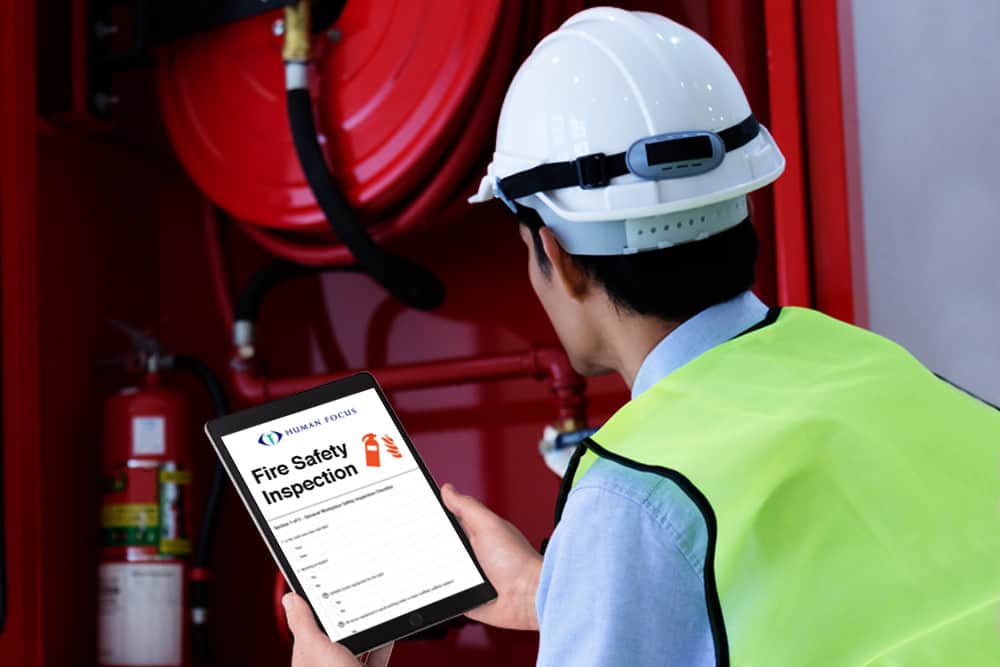
It’s essential to do the right thing during a fire. Your decisions could be the difference between life and death for you and those around you. But without knowledge or training, making the right choices is hard when you’re under pressure. Workplaces and schools practise fire drills for this exact reason. And it’s why you need to be aware of the types of fire extinguishers and when to use them before you find yourself in an emergency.
Knowing the correct type of extinguisher for any fire class could stop you from worsening a bad situation. It’ll prevent you from grabbing the wrong extinguisher when it matters.
Read our guide to learn more about fire extinguisher colours, types and codes and the fires they’re meant to extinguish.
Classes of Fire
The elements that cause a fire – a dangerous combination of heat, oxygen and fuel – are consistent. But they never meet in precisely the same way. There will always be some variance in the amount of oxygen, temperature or fuel type. And it’s the difference in fuel that defines the class of fire.
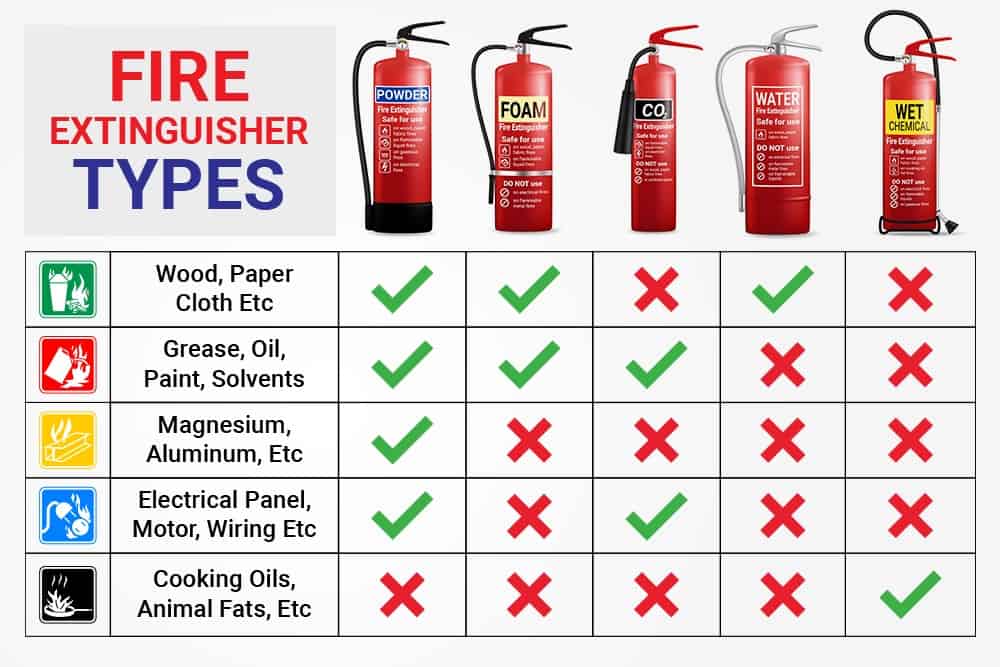
There are six classes of fire, labelled from class A to class F (with one exception). The classes are:
- Class A (solid combustibles) – These fires are fuelled by solid combustible materials such as paper, wood or fabric. Generally, every workplace is at risk of a class-A fire as these materials will have a significant presence.
- Class B (flammable liquids) – These fires involve flammable liquids such as petrol or white spirits. Petrol forecourts are a prominent location vulnerable to class B fires. Restaurants, bars, hospitals, and laboratories are also at risk.
- Class C (flammable gasses) – These fires happen when flammable gases, such as propane or butane, ignite. Again, hospitals and laboratories are at a higher risk of class C fires than other workplaces, as are manufacturing or industrial sites.
- Class D (burning metals) – These occur when burning metals ignite, such as magnesium and sodium. Laboratories (again) or specific warehouses are at greater risk to this fire class.
- Electrical Fires – This fire class breaks the naming convention and is just called an electrical fire. These fires happen when live electrical equipment is involved, which puts almost every workplace at risk. Faulty (or misused) electrical equipment is one of the most common causes of workplace fires, so it pays to know which extinguishers you can use safely.
- Class F (cooking oils and fats) – The fires involve burning cooking oils and fats. Restaurants, kitchens and food-manufacturing sites are most at risk of class F fires.
Each fire requires a different type of extinguisher to safely put it out. Use the wrong kind and you won’t make any difference to the fire. Or you can make a dangerous situation significantly worse, putting yourself at greater risk or causing the fire to spread.
Types of Fire Extinguishers
Different types of fire extinguishers are built to handle different fire classes. And every extinguisher should be clearly labelled with the fire extinguisher colour codes so you can quickly check its suitability in an emergency.
There are seven types of extinguishers, depending on how you classify them (some fire safety professionals group powder-based extinguishers into one type).
You should be aware of the design, operation and intended use of each type of fire extinguisher to ensure you’re using the right one for each fire classification.
Water Extinguisher
Water extinguishers are only suitable for class A fires. They must not be used for electrical or class F fires. Some water-based extinguishers will have chemical additives to improve their effectiveness but this does not make them suitable for every type of fire.
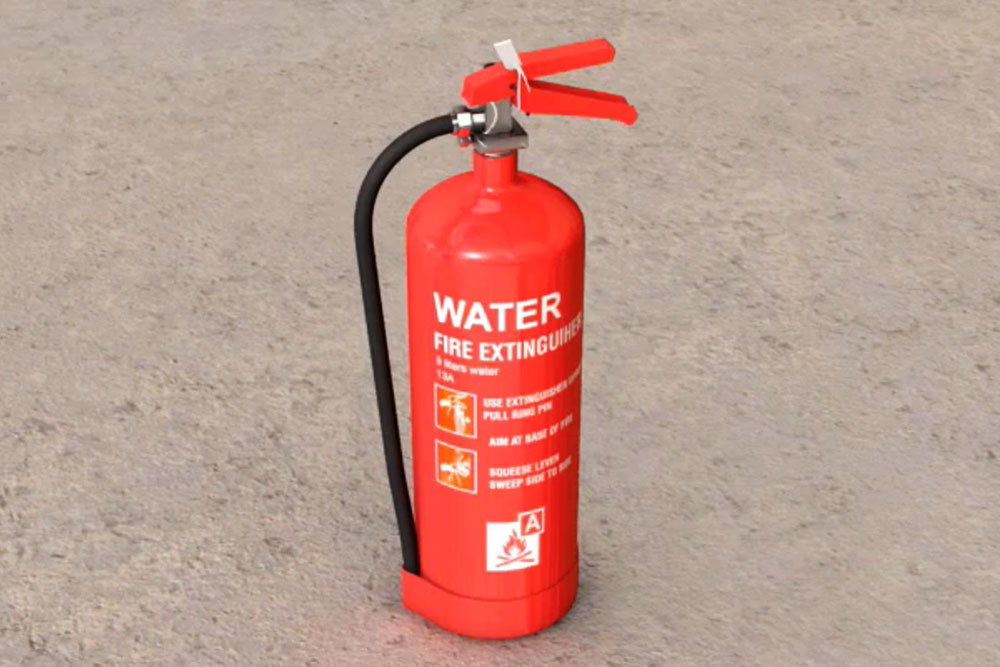
Water Extinguisher Colour – They’re usually solid red, but some will have a white band towards the top of the extinguisher. Whatever colour, they should always be clearly labelled ‘WATER’.
Dry Water Mist Extinguisher
Dry water mist fire extinguishers are sometimes categorised as water extinguishers. Still, it’s unsafe to consider them the same type as they’re suitable for different fires.
Dry water mist extinguishers can be safely used in every fire class apart from class D (burning metals).
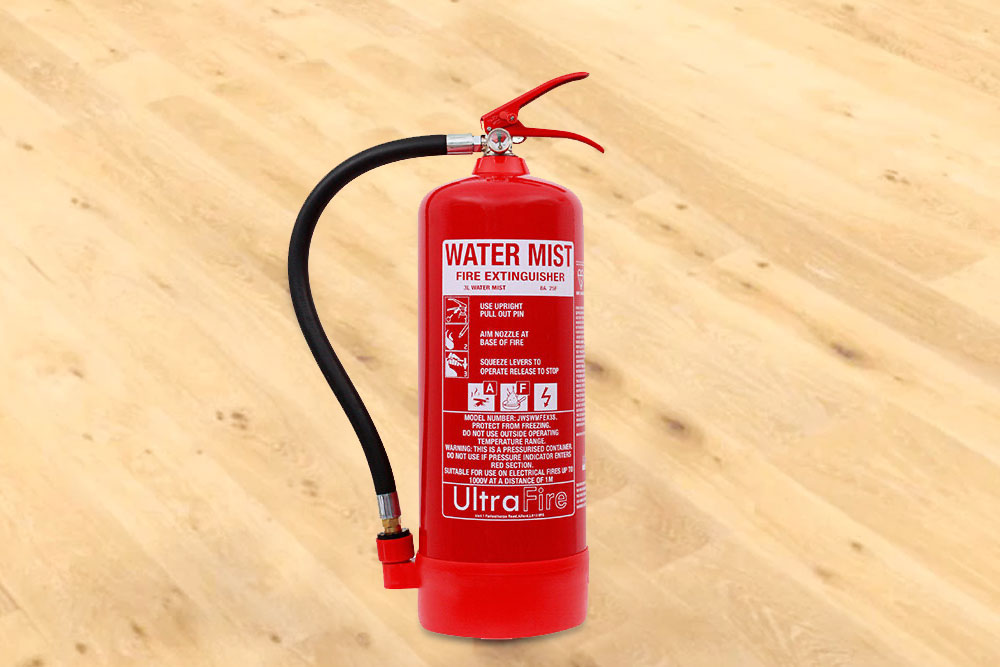
Although water-based, the nozzle design converts water particles into a dry mist, capable of cooling and suffocating various fires, including electrical ones. This mist also creates a barrier between the user and the fire, shielding them from some of the heat.
Dry Water Mist Extinguisher Colour – They’re solid red in colour and labelled ‘WATER MIST’ in a white rectangle.
Foam Extinguisher
What is a foam fire extinguisher used for? They are suitable for fighting class A and B fires. However, they should be used differently depending on the type of fire.
For solid combustibles (class A), you can direct the foam directly onto the burning materials.
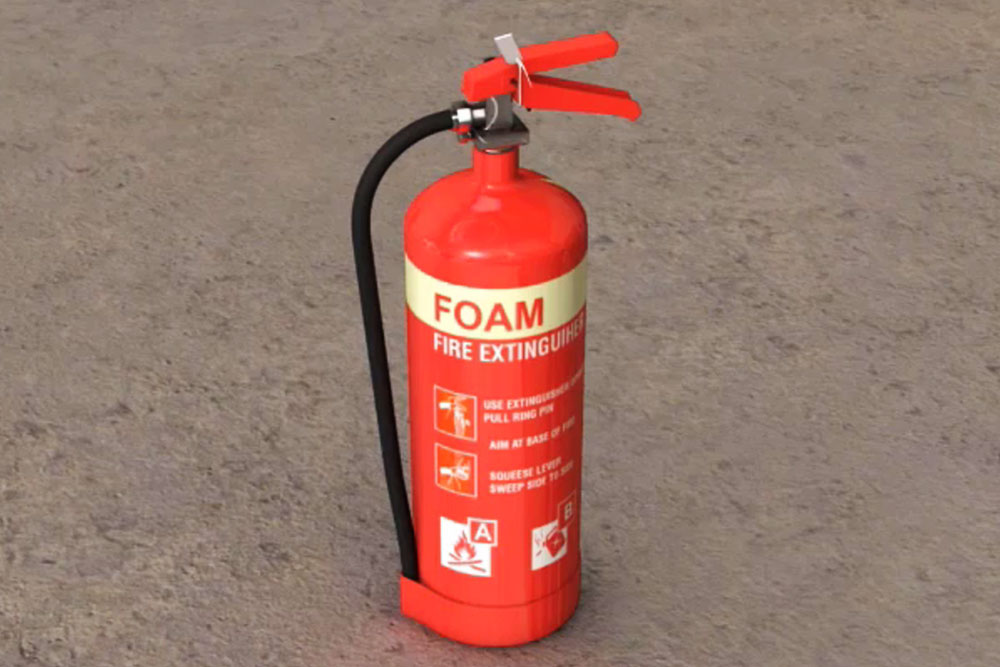
For flammable liquids (class B), the foam should be directed around the burning substance until enough foam has built up to smother the fire. This prevents the risk of spreading flammable liquids by the force of the spray.
Never use foam extinguishers on electrical fires or class F fires. They won’t necessarily put the user at greater risk but will be completely ineffective. So, they are not an ideal fire extinguisher for home.
Foam Extinguisher Colour – They are solid red and labelled ‘FOAM’ on a cream-coloured rectangle.
Carbon Dioxide (CO2) Extinguisher
Suitable for class B and electrical fires.
Carbon dioxide fire extinguishers displace oxygen to smother a fire. This makes them safe to combat electrical fires but hazardous to use in confined spaces where oxygen is limited for the user.
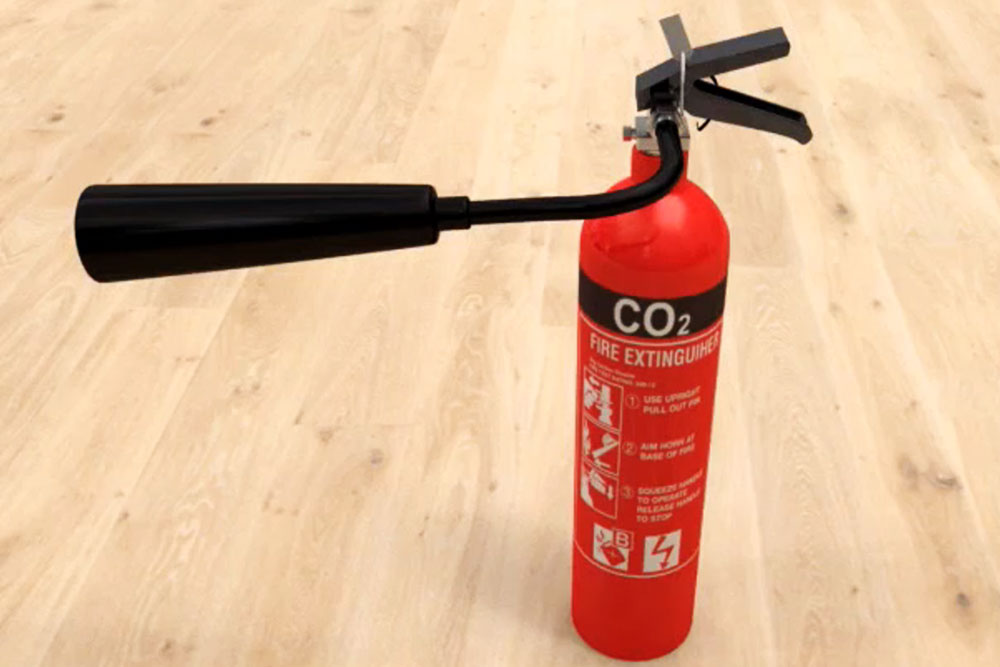
You must also be careful when operating this extinguisher as the horn, base and pipework will become dangerously cold when the CO2 is discharged.
Using them on class F fires is also unsafe as the force of the CO2 can displace and spread the burning oils.
Carbon Dioxide Extinguisher Colour – Always solid red and labelled ‘CARBON DIOXIDE or CO2’ against a black rectangle.
Wet Chemical Extinguisher
A wet chemical fire extinguisher is designed for class F fires. The firefighting chemicals are discharged at a lower force than other extinguisher types, minimising the risk of spreading burning oils and fats. The wet chemicals are also suited for tackling the high temperatures of burning oils.
You should always use up the contents of a wet chemical extinguisher. This will help ensure the fire is wholly smothered and will not reignite.
While not hazardous when used on other classes of fire, wet chemical extinguishers are only really designed for class f blazes, so it’s not worth trying to use them in any different situation.
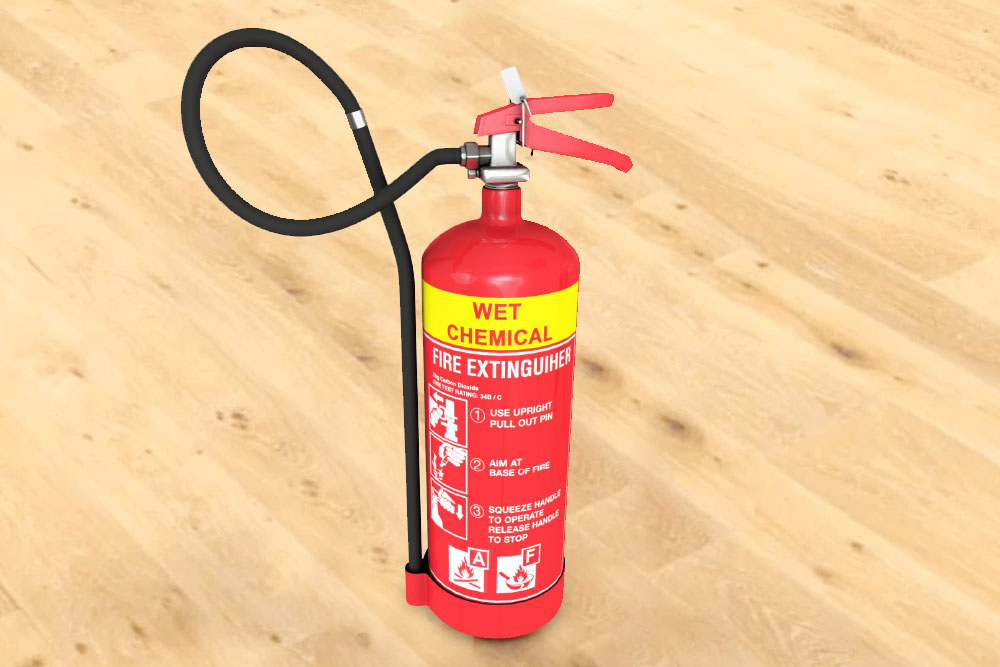
Wet Chemical Extinguisher Colour – This extinguisher is always red in colour and labelled ‘WET CHEMICAL’ on a yellow rectangle.
Knowing that each fire class needs a different type of extinguisher helps prepare you for fighting fires at work or any setting. It might be enough to get you to pause and check you’ve got the correct extinguisher in a high-stress situation but if you want to be sure, you need training.
ABC Powder Extinguisher
Suitable for class A, B and C fires, as the name implies. They can also be used somewhat successfully for combating electrical fires but there will be a chance of reignition. They’re not suitable for class F fires, however.
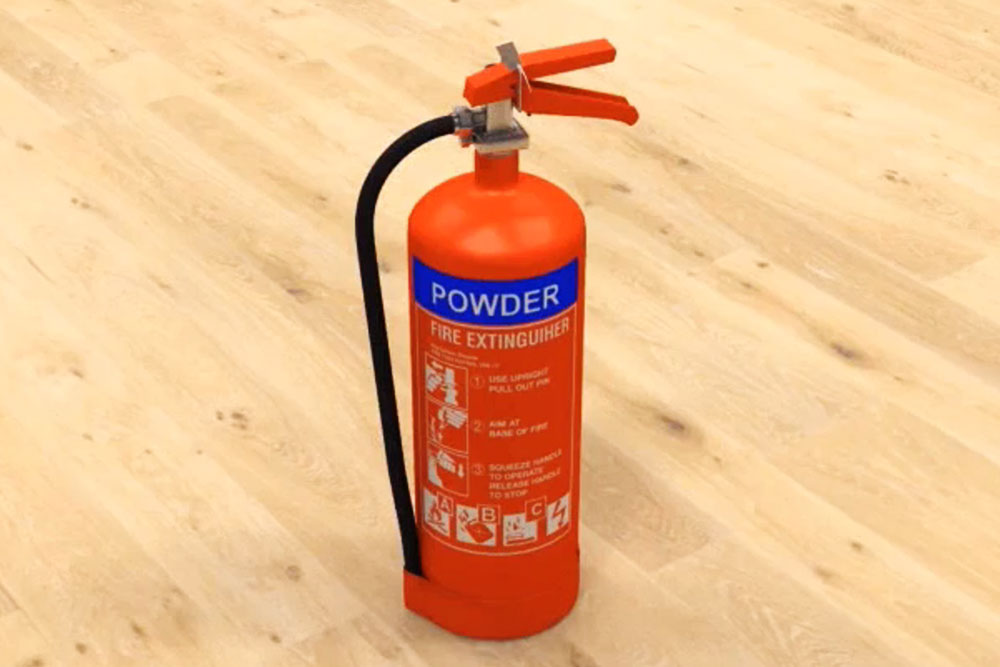
You shouldn’t use this extinguisher in a confined space, as inhaling the powder is risky.
ABC Powder Extinguisher Colour – Solid red in colour and labelled ‘POWDER’ against a blue rectangle. The label should also clarify whether it’s an ‘ABC’ powder extinguisher.
M28 and L2 Powder Extinguisher
These are two different sub-types of powder fire extinguishers. These specialist extinguishers are for class D (burning metal) fires. You can usually spot them by their unique hose design.
You shouldn’t use this type of extinguisher for any other fire class.

M28 and L2 Powder Extinguisher Colour – Along with the aforementioned unique hose design, these extinguishers are solid red and labelled ‘M28’ or ‘L2 POWDER’ on a violet rectangle.
Where Can I Get Fire Extinguisher Training?
Our Fire Extinguisher Training course helps you learn the different types of extinguishers and the right time to use them. You’ll be better prepared to choose a suitable extinguisher for the job, even under pressure. You’ll also learn the proper operating technique for each type, giving you the best chance of extinguishing a fire and keeping yourself and others safe, whatever the situation.
